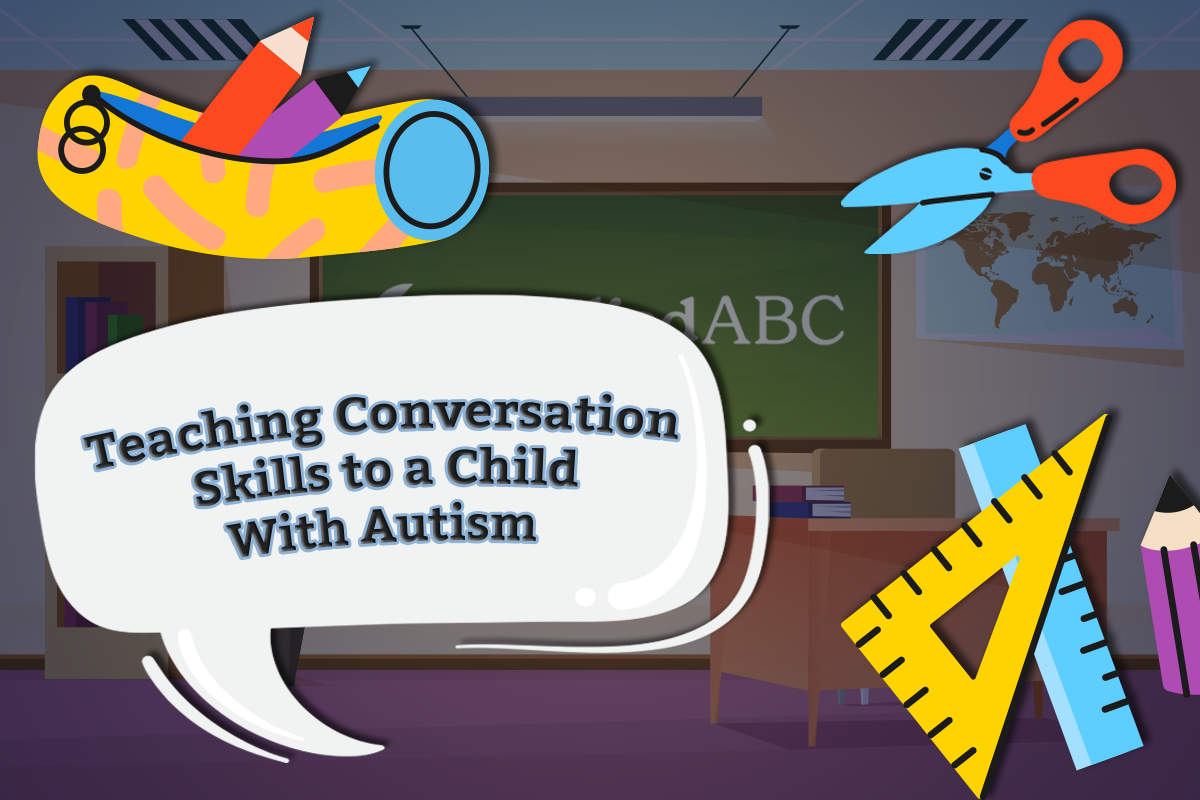Teaching Conversation Skills to a Child With Autism
As a social species, humans have an innate desire to communicate and socialize with one another. It’s why we aren’t formally taught how to have a conversation, as it’s a skill that develops naturally for many people. However, there are both neurodivergent and neurotypical people who aren’t natural conversationalists and struggle with holding dialogue with others.
The Act of Conversation
Conversation is more than just an exchange of words between people, and many facets of this social interaction are easy to overlook. Facial expressions and body language also can play a part in personal expression — whether intentional or not — during conversation.
Moreover, participants in conversation might also be well-versed in initiating and maintaining discussions on a topic, taking turns, pausing for a response, and naturally ending their interaction. The range of these conversational characteristics that one might experience is as diverse as the people they interact with.
How Autism Spectrum Disorder Affects Communication
One of the hallmarks of autism spectrum disorder is difficulty in social situations. While people diagnosed with autism may struggle in these scenarios, communication is not impossible for them. Neurotypical individuals may not realize that those with ASD may have different modes of communication than their own. For example, a person with autism may move around or display different levels of attention during conversation than a neurotypical person might.
Other characteristics of autism that might affect a person’s interpersonal skills are:
Anxiety
Delayed language and learning skills
Hyperactivity and inattention
Emotional regulation deficiency
Incidental Teaching to Aid in Conversation Skills
Incidental teaching is a technique used mainly for children between the ages of 2 and 9. Speech pathologists and occupational therapists use this situational method to take advantage of spontaneous teachable moments. As opposed to Discrete Trial Training, which takes place in a controlled environment, incidental teaching occurs naturally during play.
When something captivates a child’s attention, educators can use that focus to help the child learn in an area of deficiency. To illustrate, a therapist may place a desirable item within sight — just out of reach — and wait for the child to ask for it. When the child asks for the item, the therapist may take the opportunity to introduce color concepts with the colors in the desired item.
Relearning to Communicate
Communication is a two-way street, and as the mindset of the general population shifts, a change in social exchanges occurs. While neurotypical individuals might have baseline expectations for conversation, social norms should be flexible to allow for inclusivity. Bending the rules of social engagement can lead to new discoveries in the ways and reasons humans communicate. For instance, a 2020 study by Connor Tom Keating and Jennifer Louise Cook found that shared attention between people is greatest when first making eye contact with one another, rather than during long periods of eye contact — the general assumption prior to their study.
Shorter Sentences
Neurodivergent people may better understand language when it’s put in its most basic form, and using shorter sentences can be a great way to keep children with autism engaged. If too much information is provided, the child may become overwhelmed, distracted by an external occurrence, or by a different topic.
Collaborate On Talking Points
Another way that parents and therapists can help children with autism develop conversation skills is with topics of the child’s choosing. Conversation flows much more easily and naturally for a person when they can speak on a topic of their own interest. Children can be prompted to consider topics outside of their special interest areas to gain experience in more universal discussions, such as the weather or general happenings in their daily life.
Prompt and Encourage
Open-ended questions provide children with autism a chance to think and speak more broadly. When asking open-ended questions, be sure to motivate the child to respond when it’s their turn to speak, and if necessary, provide prompts that can guide them to an answer.
Special Interests
When collaborating on talking points, it’s likely that a child will want to choose a topic on one or more of their special interests. This is an opportunity for the child to speak without so much attention on how they’re conversing since they may become more focused on the topic itself. Conversations involving a child’s special interest are a great time to introduce or practice skills such as taking turns speaking or ending discussions.
Non-verbal Signs
Some children with autism may struggle with verbal communication, and others may rely on a combination of verbal and nonverbal expressions. In these cases, a child might use gestures as an indicator of feelings they find difficulty expressing. Giving focus to these gestures and actions of intention may provide more information than expected once they’re successfully interpreted.
Sources Cited:
National Institute on Deafness and Other Communication Disorders. Autism Spectrum Disorder: Communication Problems in Children.
Politis, Yurgos, et. al. The Development of the Conversation Skills Assessment Tool.




